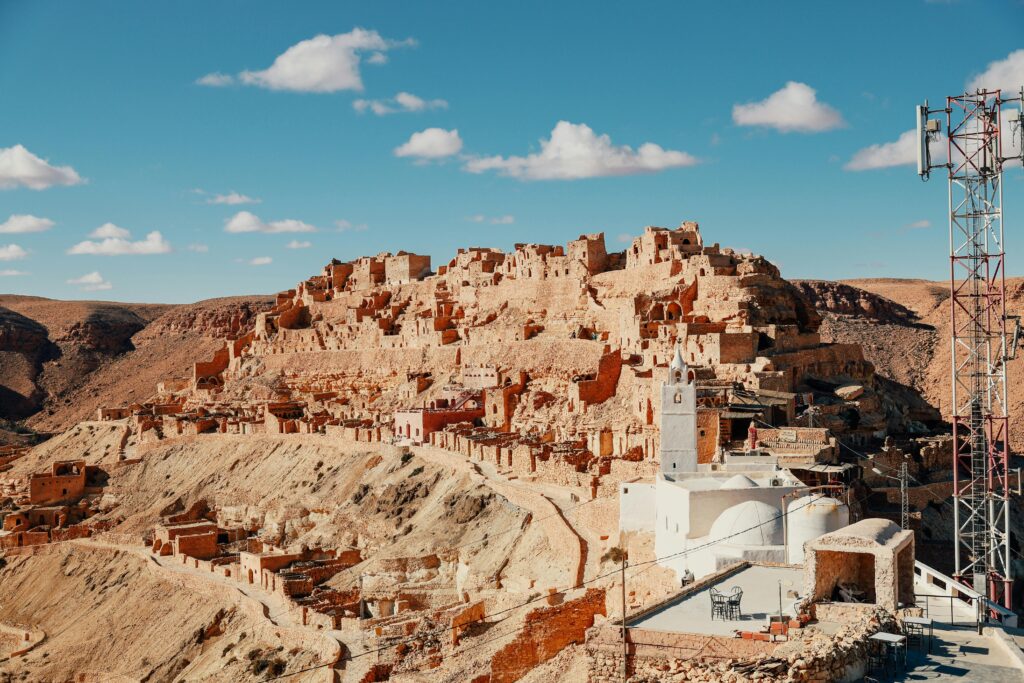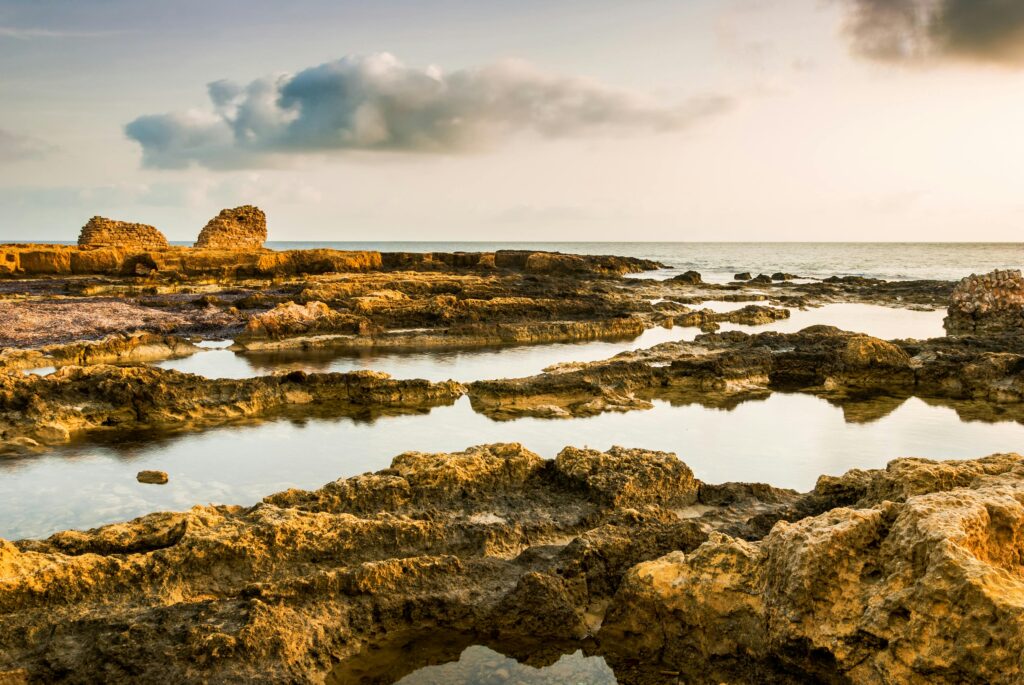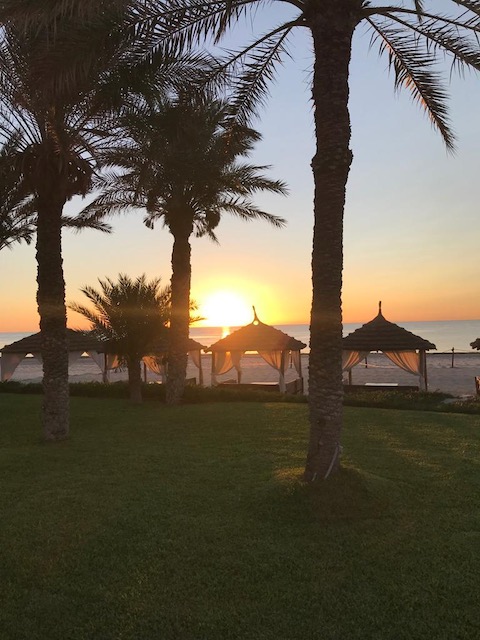Tunisia / الجمهورية التونسية – Let’s explore here

What’s it like in Tunisia?
Tunisia is a relatively small and beautiful country in north Africa, dominated in the south by the Sahara Desert, and the west by the Atlas Mountains. Slightly larger than Greece, it sits at the centre of the Maghreb (the western part of the Arab world).
In ancient times it was the home of the Carthaginian Empire that dominated the Mediterranean. As with many nations in north Africa, it has a very long, rich and troubled history. It shares is land borders with Algeria and Libya.
The capital, Tunis, is home to around 2.7 million people, about a quarter of the total population of the country. The highest point is Mount Ash-Sha’nabi, in the Chambi National Park on the border with northern Algeria. The peak is 5,066 ft (1,544 m) above sea level.

A bit about the history of Tanzania
Pre-Colonial Era
Tunisia has a long history of diverse civilisations. It was home to the ancient Phoenician city of Carthage, founded in the 9th century BC. Carthage became a dominant power in the Mediterranean before its defeat by Rome in 146 BC, marking the end of the Punic Wars. After Roman rule, Tunisia came under Byzantine control, followed by Arab conquest in the 7th century, which introduced Islam to the region.
Ottoman Period
In the 16th century, Tunisia became a part of the Ottoman Empire, remaining under Ottoman rule for several centuries. During this time, Tunisia was largely autonomous, ruled by local beys (governors) who had significant influence over the region’s politics and economy. The period was characterised by relative stability, although the country was involved in the regional conflicts of the time.
French Protectorate
In 1881, Tunisia became a French protectorate, though it retained its nominal sovereignty. Under French control, Tunisia’s economy modernised, particularly in agriculture and infrastructure. However, political power was concentrated in the hands of the French authorities, and Tunisians began to demand greater autonomy.
Independence and the Bourguiba Era
Tunisia gained independence from France in 1956, and Habib Bourguiba, leader of the Neo Destour party, became the first president. Bourguiba implemented a range of modernising reforms, including secularisation, land redistribution and improvements in education and women’s rights. He established a one party state and ruled with an authoritarian style, though his leadership brought relative stability to the country.
Ben Ali Regime
In 1987, Bourguiba was replaced by his prime minister, Zine El Abidine Ben Ali, in a bloodless coup. Ben Ali introduced economic reforms and initially enjoyed widespread popularity. However, his rule soon became increasingly repressive, characterised by human rights abuses, corruption and the stifling of political opposition. Ben Ali was re-elected in multiple elections, but his regime became increasingly unpopular due to its authoritarian nature and growing economic difficulties.
The Tunisian Revolution and Aftermath
In 2011, widespread protests erupted in Tunisia, driven by high unemployment, political corruption and government repression. The unrest was triggered by the self-immolation of Mohamed Bouazizi, a street vendor protesting police harassment. The protests grew into a nationwide movement, leading to Ben Ali’s flight into exile in January 2011. This marked the beginning of the Arab Spring, a wave of protests and uprisings across the Arab world. After Ben Ali’s departure, Tunisia entered a period of political transition, with the drafting of a new constitution and the establishment of a democratic government. The country became a parliamentary republic, with free elections held in 2014. The transition was marked by the peaceful coexistence of various political factions, including secular and Islamist groups.
Political Challenges and Economic Issues
Despite its successful transition to democracy, Tunisia faced significant challenges, including high unemployment, economic instability and security threats from militant groups. Terrorist attacks, such as those targeting tourists in 2015, undermined the country’s tourism industry and its reputation for stability. The government has worked to address these challenges, but the country still faces a high level of inequality and regional disparities.
Tunisia in 2025
As of 2025, Tunisia is still navigating its post revolutionary phase. The political landscape remains fluid, with regular changes in leadership and ongoing debates over the balance between secularism and Islamism. While Tunisia has made significant strides in democratic governance, economic struggles, particularly unemployment and inflation, remain major issues. The country is also dealing with security concerns, though it has made efforts to stabilise the situation. International partnerships, particularly with the European Union, continue to support Tunisia’s development. However, the country’s path remains uncertain as it balances the goals of economic growth, political stability and social cohesion.

Tunisia road trip
Our Tunisian road trip is part of a much larger African road trip.
On our current road trip through Tunisia we’ll travel from Sicily, Italy via ferry to the capital, Tunis. The route then hugs the coast southwards down to Tataween, before heading north west to Chott el Djerid (Lagoon of Palms). Chott el Djerid is a salt lake that sits below sea level. During summer, many mirages can be seen.
Map of our road trip through Tunisa

Our travels through Tunisia take us from the port and capital, Tunis – Sousse – Sfax – Gebes – Tataween – Souk El Ahad – Touzir – Talib al’Arabi. After touring through Algeria, the route returns via al’Ewan – Tunis.
Our favourite places in Tunisia
Tunisia is a fantastic country, the people are so friendly and welcoming.

What’s it like to drive in Tunisia?
They drive on the right hand side of the road in Tunisia. In the north and along the coast, driving is fairly easy going, although minor accidents are common. Driving in the capital is not for the light hearted, as with all north African capitals. Roads are quite good in Tunisia, aside from those in the far south and west.
Driving in the desert
Driving in the desert takes experience and should never be undertaken lightly. Having the correct tyres, as well as specialist rescue equipment, and digging implements can literally save your life. Fuel stations are irregularly spaced, so extra fuel cans for spare fuel are required. Similarly always prepare by taking lots of extra water and food should there be any mishaps.
Police checkpoints
Local and national police have checkpoints set throughout the country, with more in the south than the north. Generally the police are looking out for you, and will insist in escorting you in some instances. Provision of a mobile phone number with an Tunisian sim card can help ease passage – although the police will expect you to check in with them at the next checkpoint – so ensure that you do so.
Do you require an international driving permit in Tunisia?
We’ve created a dedicated page to driving abroad, which answers this question, and more, which you might find helpful.
Can you use your UK driving license when driving through Tunisia?
We’ve created a dedicated page to driving abroad, which answers this question, and more, which you might find helpful.
Do I need a carnet de passages to drive in Tunisia?
We’ve created a dedicated page to driving abroad, which answers this question, and more, which you might find helpful.
What currency do they use in Tunisia?
In Tunisia they use the Tunisian Dinar. Cash is widely used. The use of credit / debit cards is widely accepted. Travellers cheques are readily accepted in tourist areas. There are many ATMs in cities and towns throughout the country.
You should make yourself aware of the amount that your bank charges you for using credit and debit cards abroad. Often credit cards are cheaper for purchasing items directly, and for withdrawing cash from ATMs.
What language do they speak in Tunisia?
They speak Arabic and Berber in Tunisia. French, English, Italian and Turkish are also widely spoken in tourist areas.
What time zone is Tunisia in?
Remember, when you’re planning your next trip to take a look at what time zone it’s in.
Do I need a visa to visit Tunisia?
We’ve created a dedicated, more comprehensive page on visas, which you should find helpful. Check it out!
Is wild camping legal in Tunisia?
Yes, wild camping is fine in Tunisia.
What plug / socket type do they use in Tunisia?
In Tunisia they use plug / socket types C and E.


Health issues in Tunisia
Is it safe to drink water in Tunisia?
No, it is not safe to drink tap water in Tunisia. Bottled water is readily available throughout the country.
What vaccinations are required for Tunisia?
This NHS website is kept up to date with all relevant information on vaccinations in Tunisia.
Phones in Tunisia
What is the country calling code for Tunisia?
The country calling code for Tunisia is +216
What are the emergency phone numbers in Tunisia?
- The emergency number for police in Tunisia is: 197
- In Tunisia, the emergency number for ambulance is: 190
- The emergency number for fire in Tunisia is: 198
If you’ve got some useful info that you’d like to share, let us know!
And don’t forget to check out all the other pictures!
